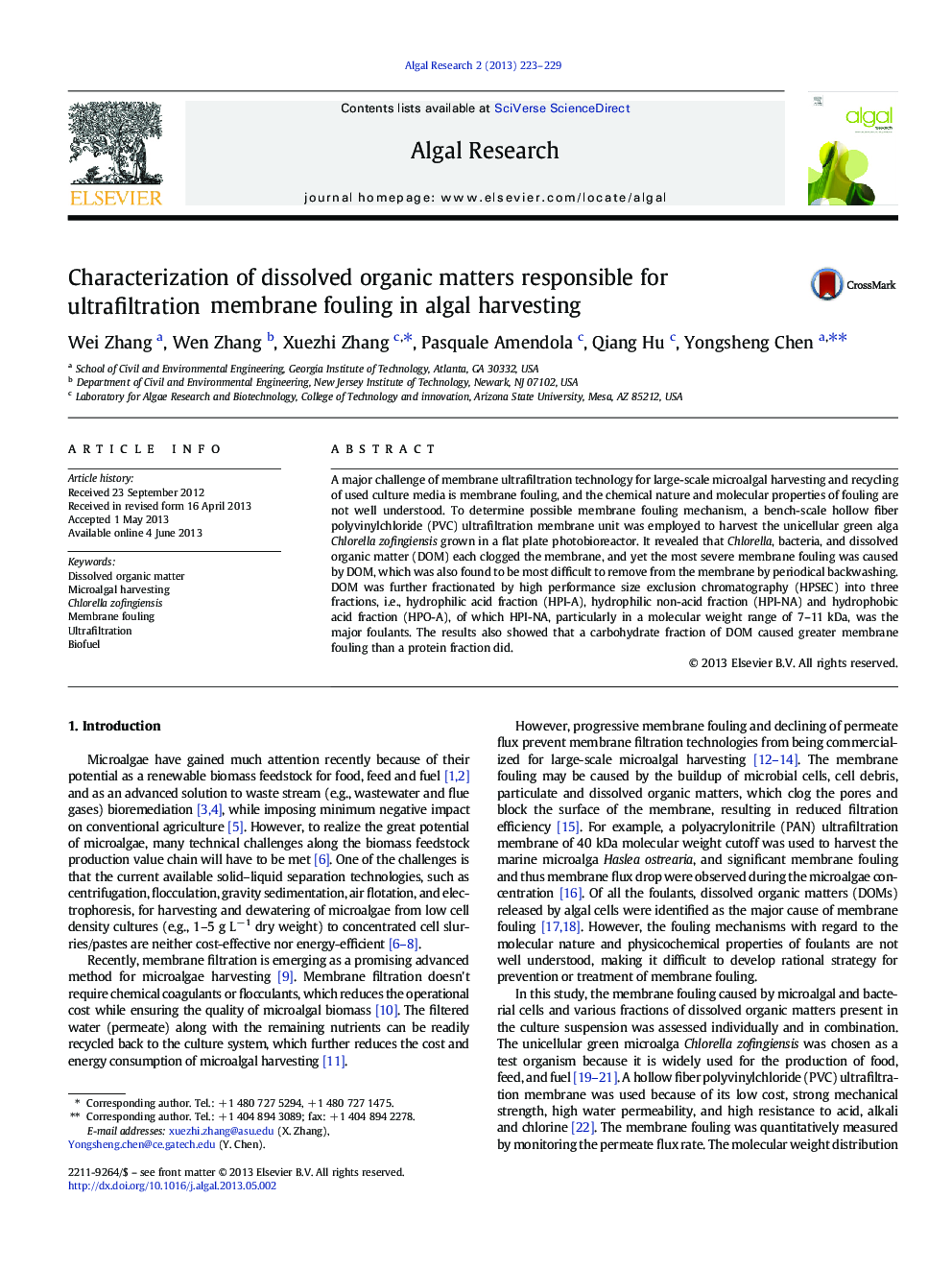| Article ID | Journal | Published Year | Pages | File Type |
|---|---|---|---|---|
| 1742067 | Algal Research | 2013 | 7 Pages |
•Membrane foulants in algal biomass harvesting were characterized.•Organic matters caused more severe membrane fouling than algae and bacteria.•Small-molecular weight, and/or hydrophilic non-acid fraction cause more fouling.•Carbohydrates were the major component of HPI-NA and the most critical foulants.
A major challenge of membrane ultrafiltration technology for large-scale microalgal harvesting and recycling of used culture media is membrane fouling, and the chemical nature and molecular properties of fouling are not well understood. To determine possible membrane fouling mechanism, a bench-scale hollow fiber polyvinylchloride (PVC) ultrafiltration membrane unit was employed to harvest the unicellular green alga Chlorella zofingiensis grown in a flat plate photobioreactor. It revealed that Chlorella, bacteria, and dissolved organic matter (DOM) each clogged the membrane, and yet the most severe membrane fouling was caused by DOM, which was also found to be most difficult to remove from the membrane by periodical backwashing. DOM was further fractionated by high performance size exclusion chromatography (HPSEC) into three fractions, i.e., hydrophilic acid fraction (HPI-A), hydrophilic non-acid fraction (HPI-NA) and hydrophobic acid fraction (HPO-A), of which HPI-NA, particularly in a molecular weight range of 7–11 kDa, was the major foulants. The results also showed that a carbohydrate fraction of DOM caused greater membrane fouling than a protein fraction did.
